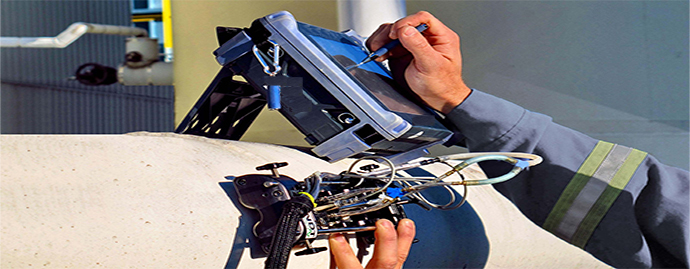| تاريخ البداية | تاريخ النهاية | الدولة | المدينة |
|---|

 ۹۲۰۰۰۷۷۷۱ ۹٦٦+
۹۲۰۰۰۷۷۷۱ ۹٦٦+

الأهداف
• The level III course review the basic principles developed at level II and then goes on to discuss the advantages and limitations of Various Liquid Penetrant Testing Procedures. A great deal of importance is placed on the Inspection & Evaluation of indications arising from both primary and secondary processing discontinuities.
الخطوط العريضة
Contents: 1.0 Principles / Theory 1.1. Principles of Liquid Penetrant Process 1.1.1. Process variables (Basic Principles) 1.1.2 Effects of test object factors on process (Temperature, shape, size) 1.2 Theory 1.2.1 Physics of how penetrants work 1.2.2 Control and measurement of penetrant process variables 1.2.2.1 Surface tension, viscosity and capillary entrapment 1.2.2.2 Measurement of penetrability, washability and emulsification 1.2.2.3 Contrast, brightness and fluorescence 1.2.2.4 Contamination of materials 1.2.2.5 Proper selection of penetrant levels for different testing (sensitivity) 1.3 Proper selection of liquid penetrant testing as method of choice 1.3.1 Difference between liquid penetrant testing and other methods (MT, ET) 1.3.2 Complimentary roles of liquid penetrant testing and other methods 1.3.3 Potential for conflicting results between methods 1.3.4 Factors that qualify / disqualify the use of liquid penetrant testing 1.3.5 Selection of liquid penetrant testing technique 1.4 Liquid Penetrant Processing 1.4.1 Preparation of Parts 1.4.2 Applications of penetrant and emulsifiers to parts 1.4.3 Removal of surface penetrants 1.4.4 Developer applications and drying 1.4.5 Evaluation 1.4.6 Post Cleaning 1.4.7 Precautions 1.4.8 Corrosion Effects Contd/ … 2.0 Equipment / Materials 2.1 Methods of measurement of light 2.2 Lighting for liquid penetrant testing 2.2.1 White light intensity 2.2.2 Black (UV fluorescent) light intensity, warm-up time etc. 2.2.3 Physics and physiological difference 2.3 Materials for liquid penetrant testing 2.3.1 Solvent removable 2.3.2 Water washable 2.3.3 Post emulsifiable 2.3.3.1 Water Base (hydrophilic) 2.3.3.2 Oil base (lipophilic) 2.3.4 Dual Sensitivity 2.4 Testing and Maintenance of materials 2.5 Special Techniques for porous materials 3.0 Interpretation / Evaluation 3.1 General 3.1.1 Appearance of penetrant indications 3.1.2 Persistence of indications 3.2 Factors affecting indications 3.2.1 Preferred sequence for penetrant inspection 3.2.2 Part preparation (pre-cleaning, stripping, etc.) 3.2.3 Environment (lighting, temperature, etc.) 3.3 Indications from discontinuities 3.3.1 Metallic materials 3.3.2 Non-metallic materials 3.4 Relevant and non-relevant indications 3.4.1 True indications 3.4.2 False indications 4.0 Procedures, Codes and Standards 5.0 Safety and Health 5.1 Toxicity 5.2 Flammability
من ينبغى أن يحضر
Who should attend? • The course is designed for anyone who is interested in satisfying the certification requirements for Liquid Penetrant Testing Level III certification or who needs a thorough knowledge and practical experience of Liquid Penetrant Testing Techniques.
المدة
5 أيام









